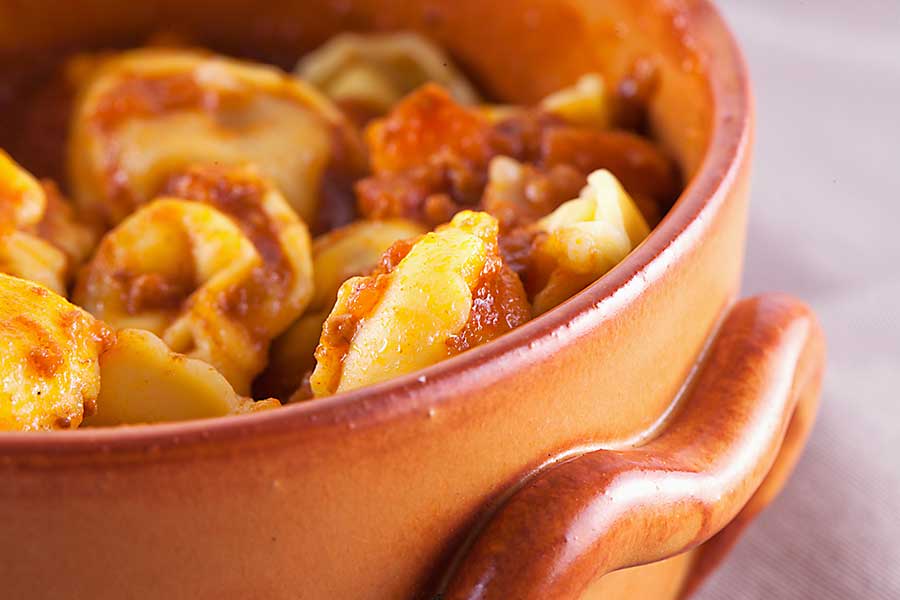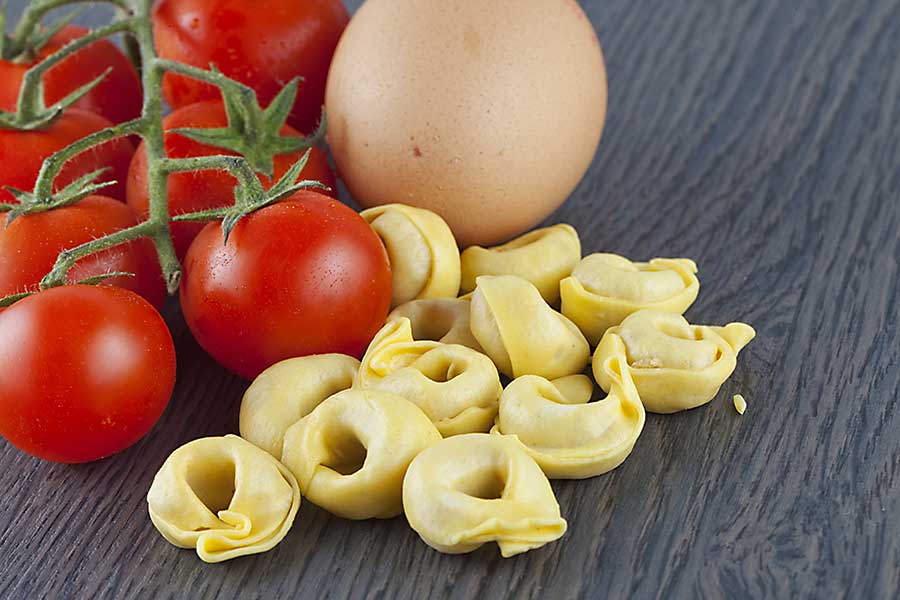Agnolotti
Agnolotti is a type of pasta that originates from Piedmont in Italy. It is made with flattened pasta dough that is folded over a filling of meats or vegetables. Agnolotti is very similar to ravioli. The difference between the two is that ravioli is prepared from two pieces of pasta cut into squares, while agnolotti is made from a single piece that is folded over. Agnolotti is also much easier to make than ravioli. The technique used to make agnolotti, involving the pinching, creates little pockets that then catch the sauce and make the pasta even more delicious.
How do you make agnolotti?
Making agnolotti is a relatively simple procedure and a lot less time-consuming than you would think! Here are some basic instructions for making your own agnolotti at home:
- Start with an average recipe’s worth of fresh pasta dough and your desired fillings. The most popular fillings for agnolotti are meats, either stewed or confit. If you’re vegetarian, you can prepare a filling made with ricotta and spinach or potato, parmesan, and black truffle for something a little more gourmet. For vegan agnolotti, use a stuffing of jerusalem artichoke or roasted pumpkin puree.
- Start by rolling out the pasta into sheets about 30cm long and 2mm thick.
- Prepare your filling in a piping bag, and pipe about 1/2 tsp worth along one side of the pasta. Keep about 3cm distance between each filling. If you’re using a 30cm sheet then you should have enough space to fit around 5 pieces of filling per sheet (thus creating 5 agnolotti).
- Carefully fold the pasta so it just covers the fillings, and push down to create a seal. You should now have a piece of pasta that is partially folded over into a tube shape, with the filling stuffed inside. Trim away the excess pasta to leave only the tube.
- Using your fingers, press down between each filling to create another seal and separate the pasta pockets.
- Use a knife or pasta wheel to fully separate each pocket. And voila! The hard part is over and you have your agnolotti. Repeat this process as many times as needed to prepare the amount of agnolotti you would like.
- Cook your agnolotti in a pot of lightly salted boiling water for 2-3 minutes. Drain and drizzle in olive oil to finish off before adding to your sauce.
Unlike some other pasta, agnolotti is not usually prepared with complex, flavoursome sauces. This is because they would overpower the taste of the stuffings. Instead, go for a light sauce. Popular agnolotti sauces are beef broth and melted butter, or fresh sage and brown butter. Top off your dish with a generous helping of Parmigiano-Reggiano cheese and you’ve got yourself a sensational meal.
What is a typical agnolotti filling?
Agnolotti is most often filled with meat that has been stewed in Barolo, a type of red wine from Piedmont. In the region of Monferrato, you can also find a version of agnolotti that is stuffed with donkey meat. That said, virtually any type of meat can be used to stuff agnolotti. Traditionally the pasta would be made from meat that has been leftover from the previous night’s dinner. The meat is usually stewed, roasted, or confit.
These days, you can find agnolotti stuffed with cheese, vegetables, and meats. Savoy cabbage is a popular vegetarian stuffing for agnolotti, as is roasted pumpkin. Cheese stuffings for agnolotti can include ricotta or a type of cheese fondue made with the addition of butter, egg yolks, and milk or cream.
How do you make agnolotti dough?
In Piedmont, the recipe for dough used for agnolotti pasta will differ from family to family. Some people choose to add plenty of eggs, and especially egg yolks, to the dough. Others will use only one egg and plenty of water. It is also traditional for some Piedmontese families to use only egg yolks in the pasta dough and not the whites. This gives the pasta a more golden colour. Some families also add spinach to the dough, making green agnolotti.
The history of agnolotti
Legend has it that agnolotti was invented in Piedmont to celebrate the end of the siege. The story says that Marquis asked his chef, Angelot, to prepare a rich dinner in celebration. Upon checking the pantry, Angelot realised there was not much food left. So he decided to use meat leftover from previous days and stuffed it inside pasta. Marquis loved this dish so much, he decided to name it in honour of the chef who invented it – Angelot.
Another theory states that the name ‘agnolotti’ comes from the word anulòt. This is local dialect for the traditional iron utensil that’s used to cut the pasta into its unique shape. The anulòt tool is ring-shaped, used to make the traditional semi-circular shape of agnolotti that is rare to see now. Originally, agnolotti were made in a semi-circular shape but today you will more typically find them made in squares of about 1-2 inches long.
Smaller agnolotti, which are more rectangular shape, are referred to as agnolotti al plin. The term plin is Piedmontese dialect for ‘pinch’, referring to how these smaller agnolotti are made by pinching the thumb and forefinger together to close the parcels.
Private Chefs, Art of Dining
CHEFIN is a private chef platform that’s reimagining social dining.
You can easily connect with 1 of our 250 private chefs and treat your guests to restaurant-quality dining experiences in the comfort of your own home, office or chosen venue. From high-end dining to quirky social food experiences, the CHEFIN platform makes it effortless for you to access gourmet food that’s worthy of a Michelin-starred establishment.
What you get:
-
- Your very own private chef who is vetted and insured,
- A customised menu for your needs,
- 24/7 concierge support,
- Complete post-dinner cleanup,
- A fun, stress-free, and unforgettably dining experience!


